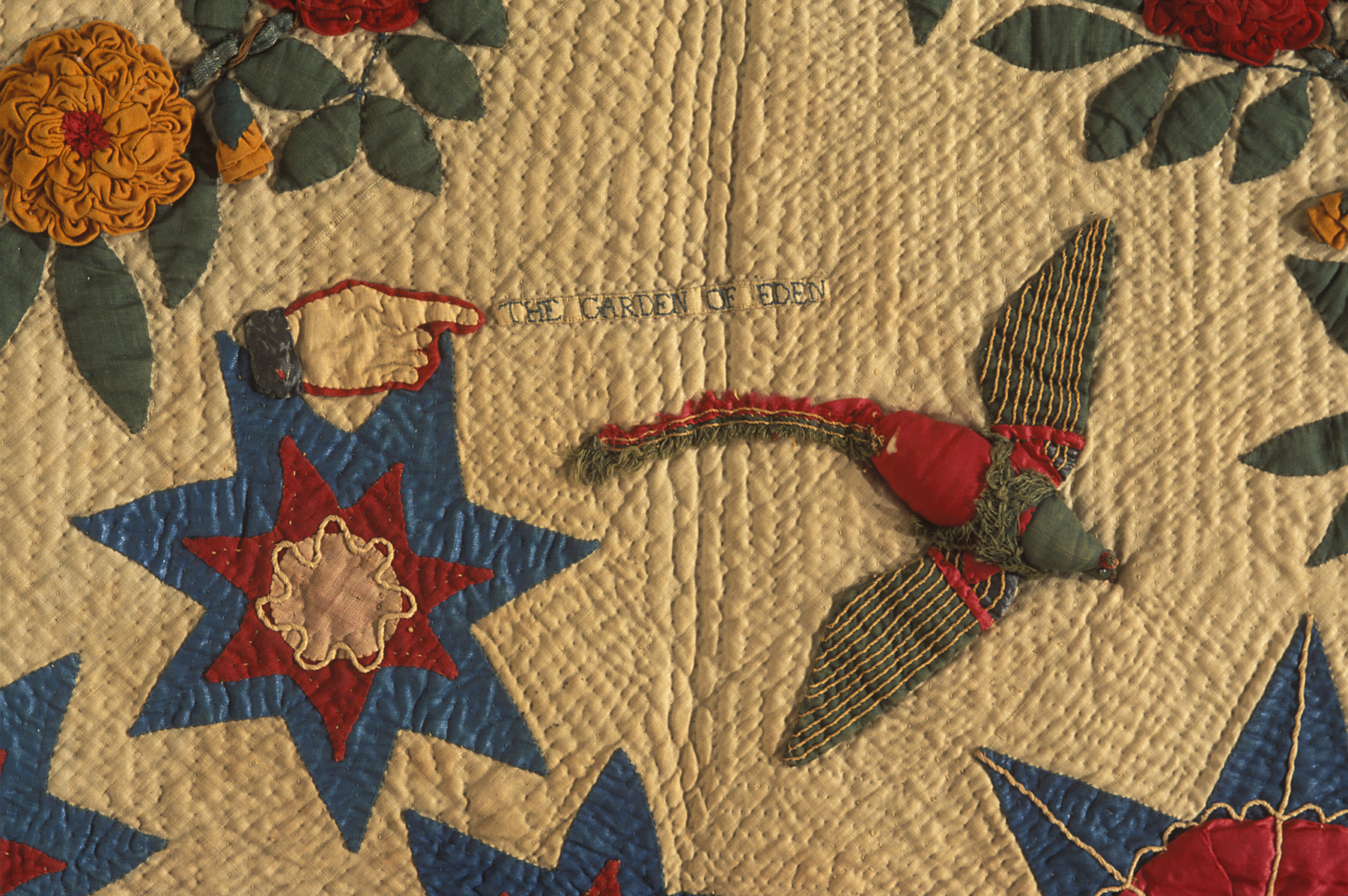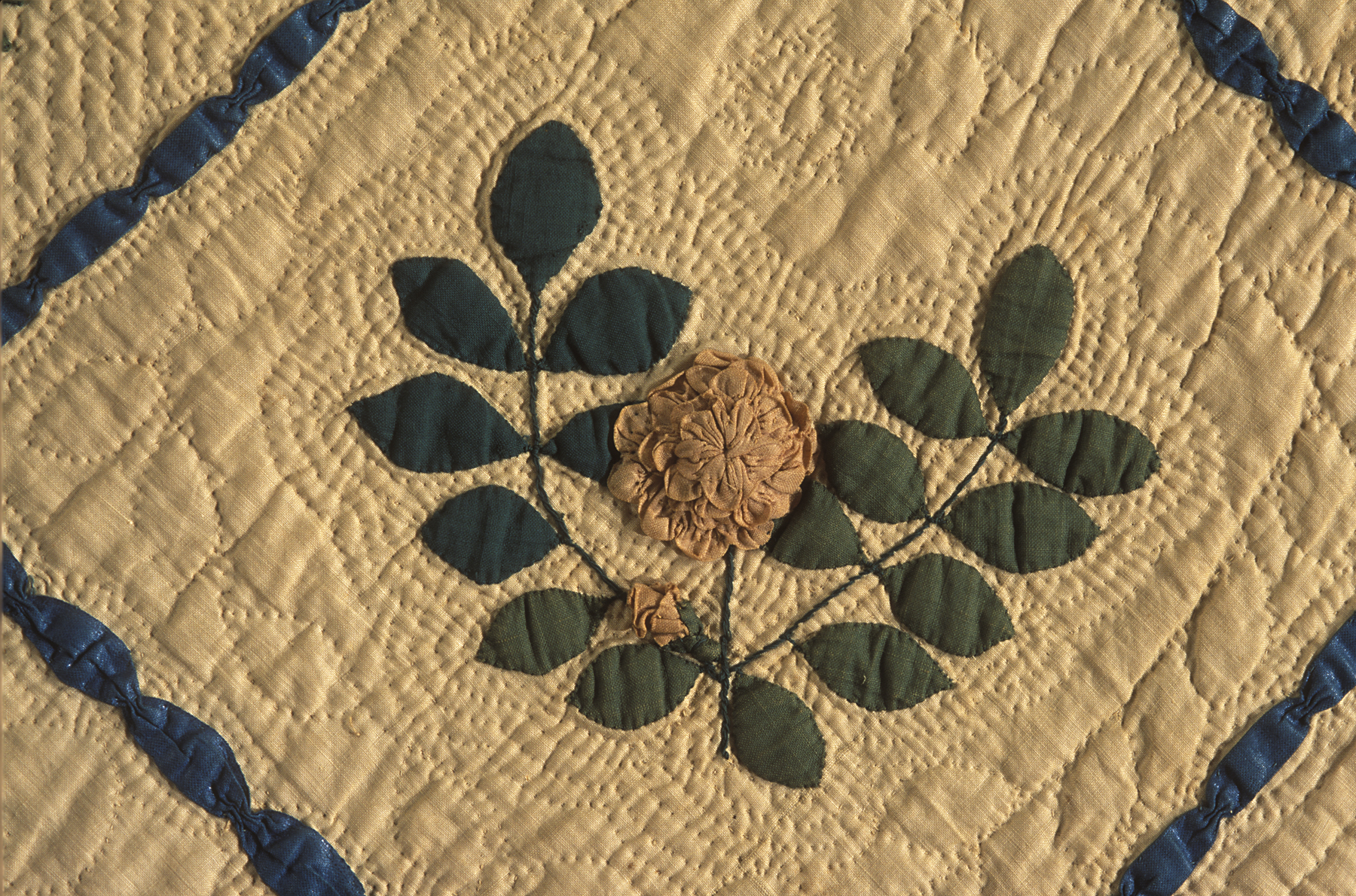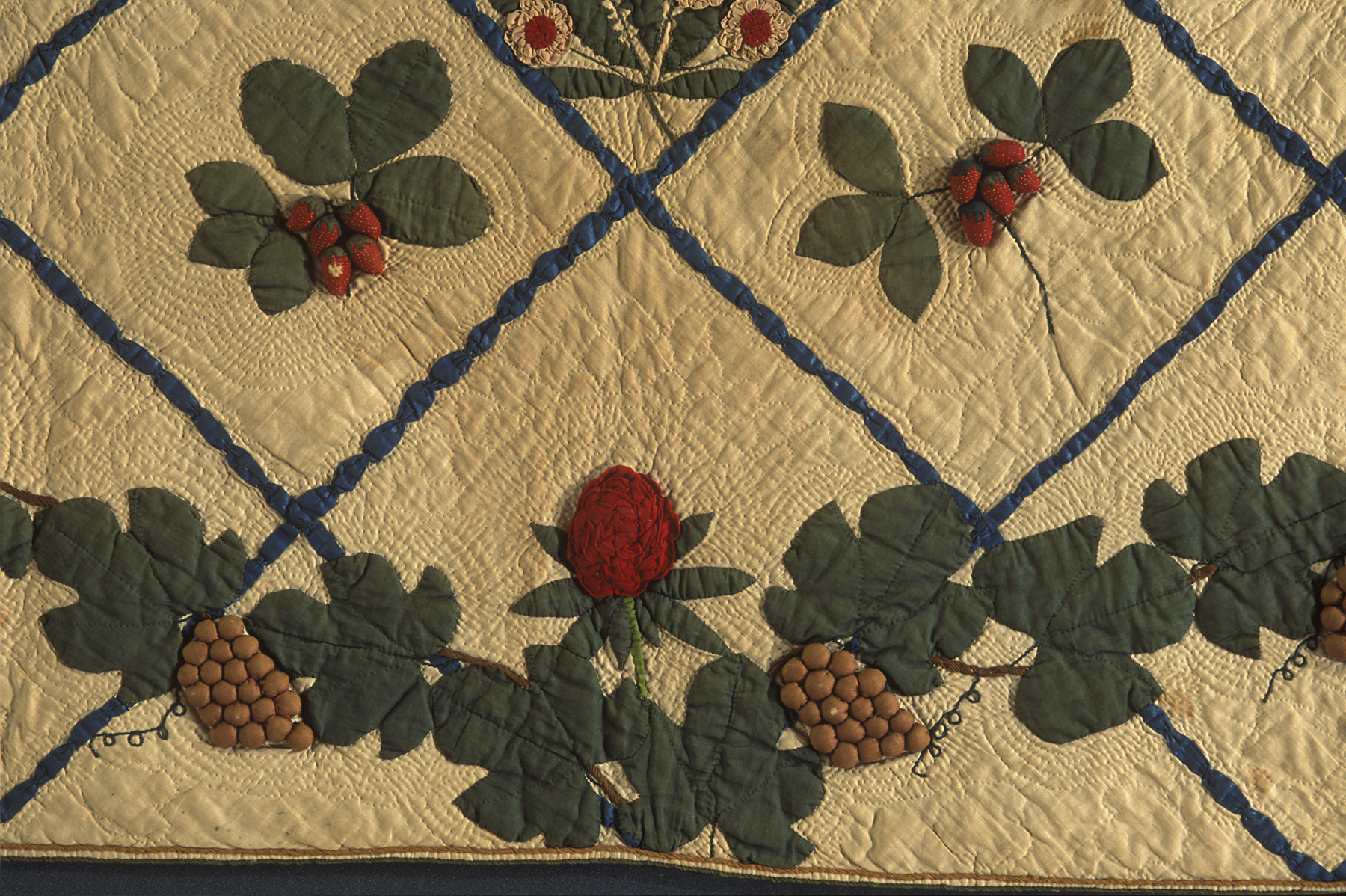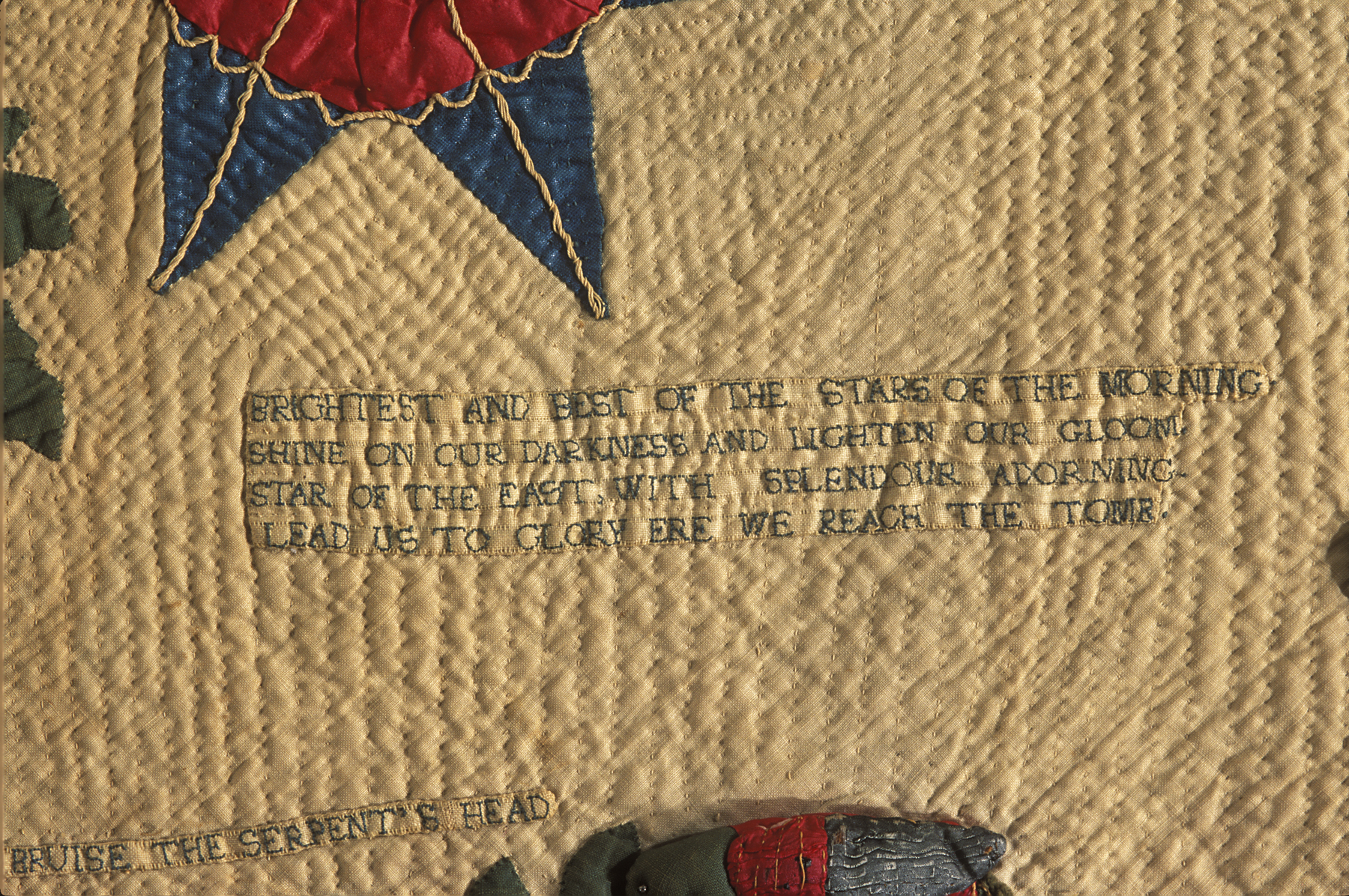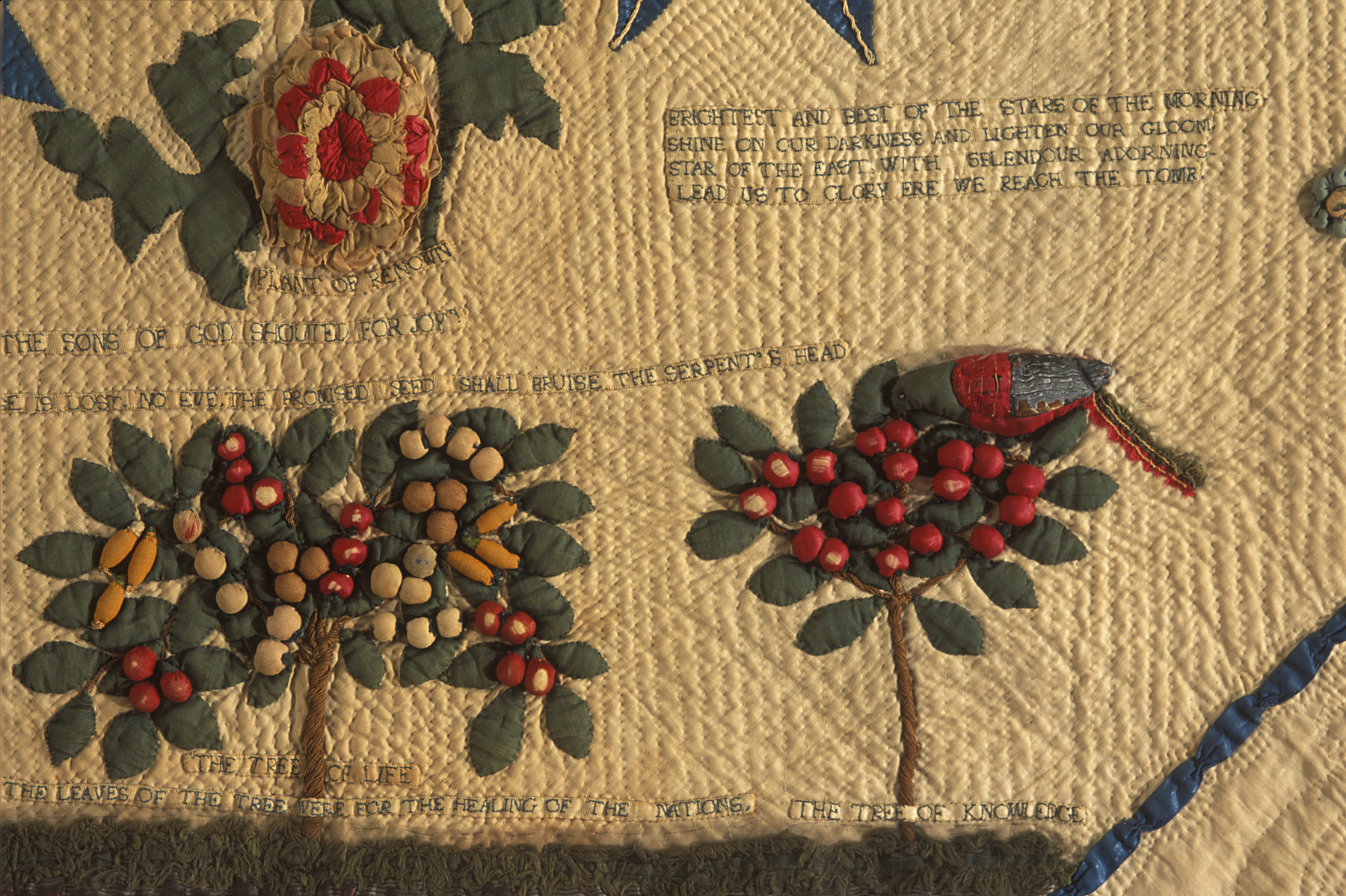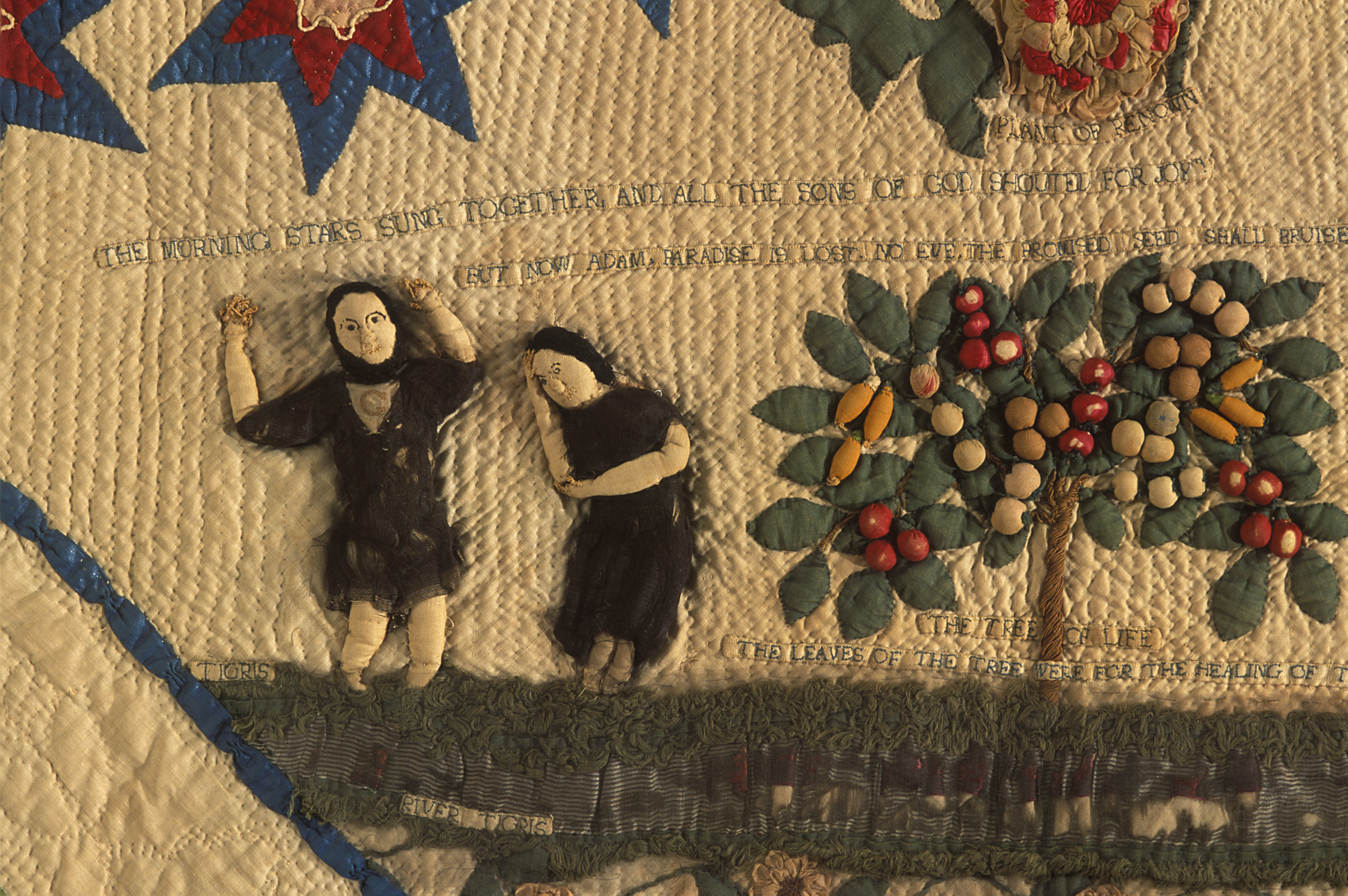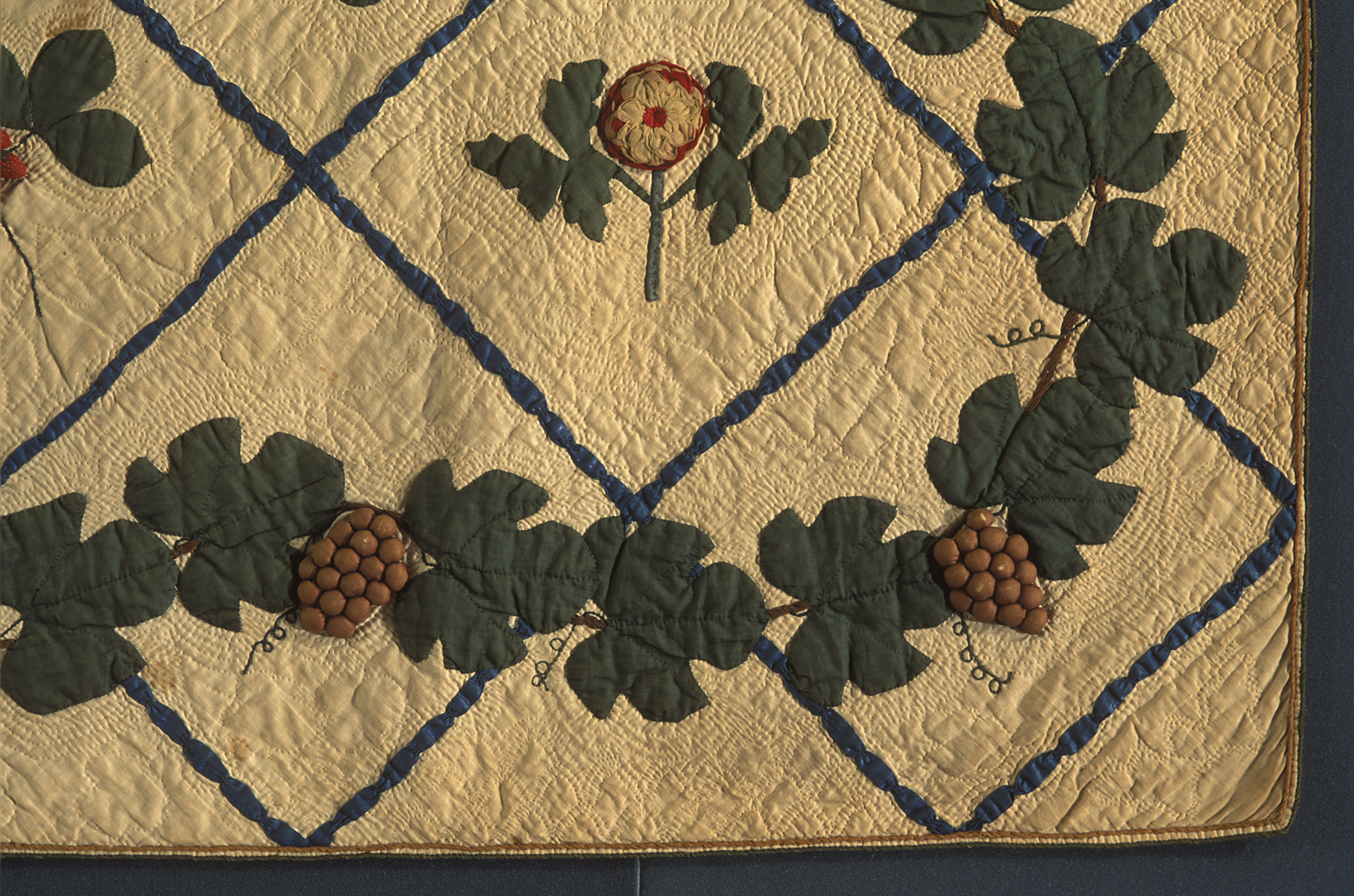Garden of Eden quilt, Olive Batchelor Wells
Artwork Overview
Olive Batchelor Wells, artist
1822–1893
Garden of Eden quilt,
circa 1840–1860
Where object was made: United States
Material/technique: beading; quilting; appliqué; linen; cotton; wool; stumpwork; embroidering; piecing; silk; stuffing
Credit line: Gift of Mr. and Mrs. C. Wells Haren
Accession number: 1978.0071
Not on display
If you wish to reproduce this image, please submit an image request

